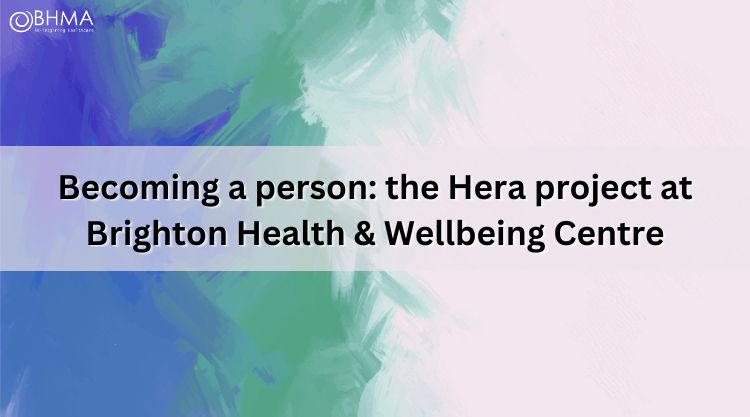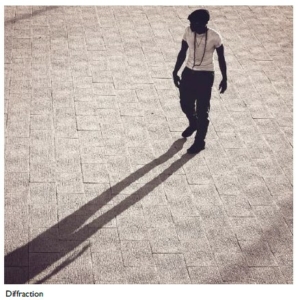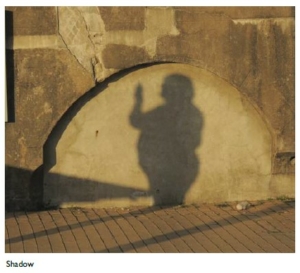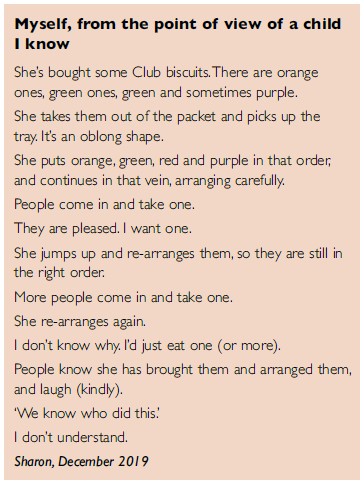Becoming a person: the Hera project at Brighton Health & Wellbeing Centre
Emma Drew, Hera Programme Director
Published in JHH 18.2-Frontiers of self-care
Famously, Plato’s idea of the perfect republic had no poets in it, but even in Ancient Greece that was a minority opinion. For as long as people have walked on two legs, creativity and community have been fundamental components of the human state. No matter what their circumstances, people have felt the need to create, and to commune with their fellow humans – regardless of what else they are up against. In this sense, Maslow’s hierarchy of needs – physiological needs, safety, love and belonging, esteem, self-actualisation, in that order – is not necessarily an entirely reliable way of determining what is important to someone living with poor health or the best route to a better or more manageable life.
At Brighton Health & Wellbeing Centre (BHWC), the Hera Project (www.brightonhealthandwellbeingcentre.co.uk/healing-arts/hera) offers a way of working with people that does not force them to make unpalatable choices, and offers them joy and comfort even when the health and care system cannot offer solutions (that might anyway be more properly the realm of local or national government policy on housing or financial support). We know that poverty, poor housing and loneliness harm people. Obviously doctors cannot address those wider social issues alone – and nor should they have to. Hera aims to join the dots between health and community, to be an additional resource for clinicians and patients alike that contributes to creative community-building and improved support around the social determinants of health. As we emerge into a post-pandemic world, in the UK at least, the need for NHS primary care to work with colleagues in other sectors is only going to intensify: there are increasing opportunities to do so, and the evidence to justify it is plentiful (WHO, 2019 and see the Royal Society for Public Health resources page).
‘I absolutely loved it, I loved Heidi’s style, she was so calm and welcoming, I loved the other ladies in the group and I couldn’t believe how much I enjoyed it… I felt like a child again and just enjoyed the process! Lovely to connect with other people too.’
Beginnings
The founding partners of BHWC, Dr Laura Marshall Andrews and Gary Toyne, made an early commitment to advancing the cause of integrated care, and incorporating creative and other non-medical approaches in the offer for patients. On the basis of trials with group singing and ‘narrative medicine’ from 2013 onwards, the case was built for growing and diversifying what we could do. I joined in 2014, from a background in literature, the arts, and work with people in recovery (Drew, 2015). In 2016 we formed a charity, the Robin Hood Health Foundation (RHHF) to fundraise and deliver creative groups in a wide variety of artistic disciplines. We are very keen to humanise the workplace for our clinical colleagues and offer arts-informed training to support integrated working and
personal and professional resilience – doctors are people too. At various points we have had aspects of our work evaluated, for example by Brighton and Sussex Medical School, and the findings are very clear: each year 70% to 80% of participants report improved mood and social connection, and demand on GP appointments from those attending three or more creative sessions is reduced in the range 27% to 41%.
What it looks like in practice
Our watchwords are creativity and community. We know from consulting patients that it was important, pre-Covid, to offer activities within or accessible from the patient’s own GP practice. That is where people tell us that they feel comfortable and safe. To start, we hosted singing, creative writing, and visual art groups in the practice’s meeting or waiting rooms. People were invited to come along by their GP. The practice environment is important too. We exhibit work by both artists and patients, and the space is light, welcoming and friendly. The programme has grown now to include photography walks, digital coding, dance and music theatre, delivered in weekly sessions, as well as annual participation in the Artists’ Open Houses scheme and links to other arts organisations for activities we cannot practically offer ourselves. All workshops are led by professional arts practitioners, who are paid properly and supported with training and clinical supervision.
‘I love the Hera group, using different parts of my brain to create in new fresh ways and explore different themes each week. It’s also good to connect as I’m housebound due to my health. I’m really enjoying it.’
Patients are invited to engage on the basis of what they might find appealing, not what is ‘wrong’ with them. In general, we do not categorise people by their symptoms, although we do our best to listen and adapt in order that people feel understood and supported. Several of our artists have undertaken training in trauma-informed practice: we share the view of our clinical colleagues that trauma is under-reported and often underlies other ‘presenting’ conditions.
In each group, the artist-facilitator is encouraged to play to their own strengths and artistic interests, and to focus on creating a safe, non-judgemental space for patients to explore their creativity. There are no ‘correct’ answers. The process is more important than the product but having said that some of the work produced is extra – ordinary. People surprise themselves with what they can do once they accept permission to try (and the same can be said when we run groups for health care colleagues). It is also, we hope, a fun and enjoyable process. With singing and dance, group leaders have had to be particularly ingenious to make the sessions effective and to promote inclusivity and involvement – but the feedback is overwhelmingly positive.
We still work out of BHWC, and in 2019 extended the offer across all three of our primary care network (PCN) practices. At the start of the first lockdown, we moved the entire programme online (in the space of about a week) and made it available through all GP practices in Brighton & Hove, for anyone living with ongoing physical and/or mental health concerns. We are currently working with patients from 11 different surgeries.
‘I enjoyed being able to find out how to link up with other people on the internet and it gave me an opportunity to try to get my interest in photography back.’
For those people not confident in using online technology we teamed up with the charity AbilityNet to provide one-to-one support with learning digital skills. More recently we have been able to access free tablets and wifi for some patients living with neurodiversity or mental health concerns, through our partners Diversity & Ability. We also offered additional training to colleagues to build their skills and confidence is using the technology, and a whole team training day for 89 primary care colleagues in arts for health and social prescribing. We have developed additional strands over the year to support some of those most at risk of avoidable decline, including Art in the Park for young people, taster sessions for refugees and asylum seekers (some of whom have no recourse to public funds so are effectively destitute), and outdoor Men Who Make crafting and stone-carving sessions for men of working age with mental health concerns.
‘I was only able to attend one session due to other factors on my life needing sorting, leaving me in a chaotic home situation and problems with internet access at times. That having been said, the group was very inclusive and I found the instruction clear and supportive. My home situation and my mental health is much more stable at the moment so I would like an opportunity to continue with this group if any places are available.’
The Hera arts team works alongside the NHS Social Prescribing Link Workers for the PCN, and the charity supported around 750 people last year, a number which grows all the time. People may engage for just a few sessions, or they may stay with us for as much as over a year. We try to avoid having any kind of waiting list where we can, as we know that a poor experience of waiting for statutory services is one very frequently cited source of distress. Having just reviewed the equalities monitoring data for 2020, it is pleasing to see that Hera’s demographic reach is reflective of our local population in terms of gender, ethnicity and age – it is not just the middle classes or ‘worried well’ who engage. Around 70% of participants have a total household income of less than £20,000 a year. 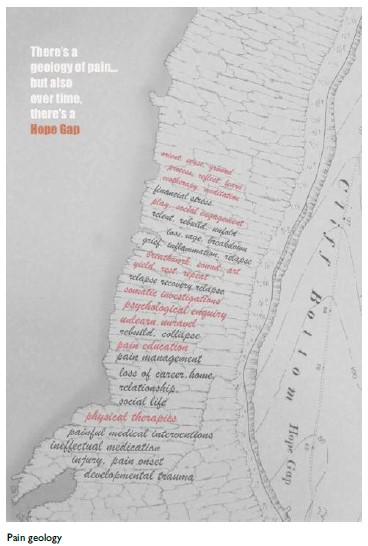
Many live alone and have experienced extreme isolation during the pandemic, often because they were shielding but that frequently came on top of pre-existing loneliness. Around 30% of participants refer themselves directly to the programme now, rather than needing to go through their GP.
‘I love the group I am with; I was invited by an existing attendee. The people on it are very interesting and I feel we are all on the same page somehow with our chatting. The artist is full of good ideas and we do something different every week. She has a lovely gift of making us all feel included and special.’
Jane’s story
Jane came to us in late 2019, referred by her GP. She was approaching her 70th birthday, and lives with chronic obstructive pulmonary disease (COPD) and painful arthritis. She lives alone in social housing and is in remission from cancer. In the spring of that year she had experienced the death of her partner, who had had a long struggle with poor mental health including addiction. Even before his death, Jane was having a tough time dealing with his behaviour and health problems, and his death was left her with complex, unmanageable feelings of bereavement and loss. By the time she engaged with us, Jane was in extreme isolation – her nearest family member was 200 miles away – and her own mental and physical health was declining fast.
She found attending her first in-person writing group nerve-wracking. She was quiet, withdrawn and mistrustful. But she did come back the next week, and the next. When the group had to go online, she was unsure, and using the technology made her feel extremely anxious. Still she came, and persevered till she got used to the screen. As she had to shield from Covid, in some weeks the group was her only direct human contact. She spent an entire year on her own. And tentatively she started to write with the group, growing more willing to read out what she had written to others. Using the frame of creative forms like free verse, villanelles, short stories, journals and letters, she little-by-little found ways to process different aspects of her trauma. In so doing she also offered comfort and companionship to other members of the group.
In late 2020, Jane was able to seek the support of her housing association to move the 200 miles needed to be near her daughter – still in lockdown and still online, she continues to come to the writing group. She is a willing, gentle, thoughtful and generous contributor. On Jane’s initiative, she and other members have now decided to set up their own group on Whatsapp, so they they can stay in touch outside of the sessions, support each other, and continue to encourage each other’s creativity in the safe space the project made for them.
They were recently joined by a younger, very vulnerable woman, to whom Jane shows a kindness and compassion which is its own medicine. These two people have very different cultural backgrounds and lives yet share the experience of complex trauma. They have become friends and mutual supports in a way that could not have happened in the context of a purely clinical consultation. Jane says:
‘If you had seen me a year ago, I could barely function, barely speak. I don’t know what happens in this group but it is magical. It has saved me. I couldn’t have got this far without it. And the writing – I used to like writing and now I can do it again. I do it every week. It’s part of the air I breathe.’
Jane talks readily now about how she is feeling, and about the continuing impact of isolation. She explores openly and candidly where she is in her recovery, and is starting, slowly, to explore and imagine a future for herself.
To understand how this simple-but-complex process works, some elements can be seen to be borrowed from person-centred counselling – attentive listening, empathy, authenticity, being positive and non-judgemental. Some elements are derived from community development – respecting agency and the experiences of everyday life, creating the conditions for diverse people to collaborate and thrive in groups. But the keys are creativity and ‘safe space’ – unlocking thought processes and ‘giving permission’ for people (any people) to try new things, to encounter new ideas, to fail, and also, critically, to succeed and surprise themselves and each other.
We look to dismantle artistic stereotypes – who can be an artist – and demonstrate in practice what we genuinely believe, which is that the creative urge impulse is part of our fundamental humanity. Imaginative exercises that explore things like tone of voice, point of view, telling detail, memory, dialogue or the senses can offer a way to bypass frozen feelings, fear, inhibition. They give a route back to fragments of the self, and by a process of trial and error build courage and a route forward to remaking the oneself, reimagining a life, in society, that is actually liveable.
‘Patients are invited to engage on the basis of what they might find appealing, not what is ‘wrong’ with them’
The barriers
Progress towards holistic care that helps people like Jane is uneven and there are strong sites of resistance. Where medicine works with communities, barriers related to social and economic harms to health can be addressed. In Brighton in particular we see higher than average rates of poor mental health, addiction, inadequate or insecure housing, falls among the elderly and, surprisingly given the city’s reputation, social isolation, all evidenced by the city’s Joint Strategic Needs Assessment (www.bhconnected.org.uk/content/needs-assessments) as well as by the day-to-day experience of GPs. Demands on statutory services are intense, and need is often not met.
This means that some of the people we support have a greater degree of health or wellbeing challenge than might be the case with arts and health or social prescribing schemes in other locations (we see this with our Social Prescribing clients as well). We are fortunate at BHWC to enjoy close working arrangements with our clinical colleagues, but in the face of the huge pressures on colleagues in other practices it has taken time and patience to build those newer relationships.
‘The creative writing group was an amazing experience. We worked on journaling which has become a really important tool for me, and writing has also started to become an outlet for expression which I lost long ago. The peers in my group were different to me but in a very adequate [sic] sense of mind and state, and their participation was always a plus. They also wrote very interesting things and gave good feedback.’
The language of medicine and the language of creativity are not always natural bedfellows, so listening empathetically to our colleagues is just as important as listening empathetically to patients – or participants, as we generally call them. Covid has only made this more important. It is also true that we must redouble our efforts to make sure that we do is presented in terms that make sense to busy GPs. 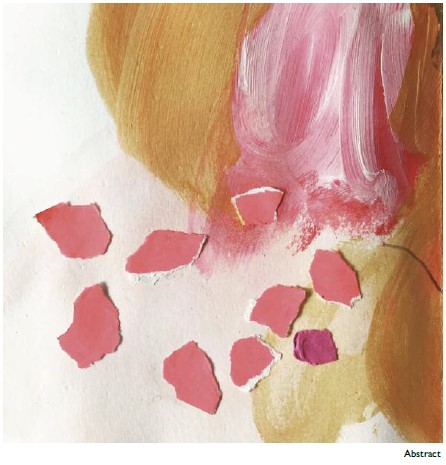
‘I liked learning. I was surprised at my ability. And I liked the manner of the teacher. Very accommodating and encouraging.’
The future
Recently we have begun (with partner organisations including the Citizens’ Advice Bureau and community development charity the Hangleton & Knoll Project) a new pilot to offer a one-year programme of creative activities, advice and other support around the social determinants of health through the joint NHS/Arts Council Thriving Communities scheme. This will be formally linked to NHS social prescribing in the western part of the city and specifically targeted at those most adversely affected by the pandemic.
Learning from Covid, and the additional community reach that the technology gave us, we have decided to plan for a ‘blended offer’ in future, with both digital and in-person activities. Always we try to design what we do with our participants’ interests and preferences in mind, and optimise the opportunities offered by the creative ingenuity of our arts team. It helps to reference over and over again the real people involved and the stories they tell us. Because of that process, we plan to integrate more ‘green prescribing’ too, building on a partnership with the South Downs National Park in 2020 called Deep Time (https://sites.google.com/readysaltedcode.com/deeptime).
We are talking to primary care colleagues to develop an integrated group consultation programme that addresses a range of both medical and social issues, using both creative and clinical knowledge, and to the PCN’s community pharmacy team to work collaboratively on de-prescribing opioids (a priority issue for the NHS).
Over time what we would like to see most of all is a programme of diverse, professionally-led creative group activities available within all GP practices in our city, sustainably supported and fully integrated into the NHS primary care offer.
‘When I started attending this group I was at my lowest point. With Rosaria’s easy to follow exercise and cheerful encouragement I am able to motivate myself to take part, considering my limitations. I look forward to doing this group and it motivates me to get out of bed. Thank you.’
Resources
Drew E (2015) The Whole Person Recovery Handbook. Sheldon Press.
Royal Society for Public Health (2021) Available at: www.artshealthresources.org.uk (accessed 23 June 2021).
World Health Organization (2019) Available at: https://www.euro.who.int/en/publications/abstracts/what-is-the-evidence-on-the-role-of-the-arts-in-improving-health-and-well-being-ascoping-review-2019 (accessed 23 June 2021).

